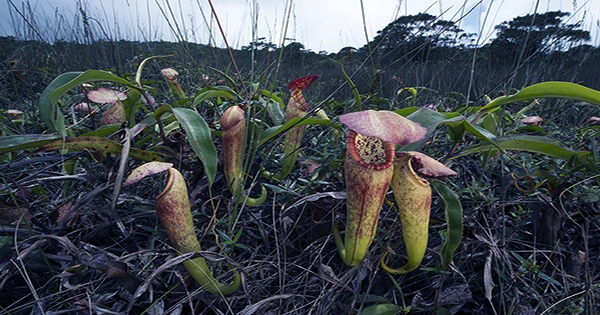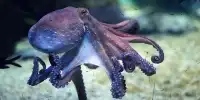Foraging is a fantastic method to get food, but humans plucking things out of the ground can have a detrimental impact on the ecosystem by raising the chance of extinction, as is the case with a carnivorous pitcher plant that looks like a lot like a human penis from the appropriate angle. According to Live Science, the phallic plant in question is Nepenthes bokorensis, and environmental specialists advise that we leave it alone. The appeal comes from Cambodia’s Ministry of Environment, which recently posted photographs of people frolicking around carnivorous penis plants on Facebook. It was in reaction to a video in which N. bokorensis was being plucked, probably for an enigmatic bouquet.
The Ministry of the Environment’s request encourages people not to gather plants while admiring nature, and they make a good point. While N. bokorensis is fairly prevalent in Phnom Bokor in Cambodia, it does so within a habitat that is already threatened by human involvement. A phallic blossom is undoubtedly uplifting, but this nepenthes closely resembles the more endangered N. holdenii. As a result, carnivorous plants could do without the popularity of penis plants.
N. bokorensis, like other nepenthes, is a pitcher plant that utilizes its bell to catch animals (ants are reported to be the species’ preference). The insects fall from the slick rim into an acidic pit, where their contents gradually disintegrate into a healthy soup. Other carnivorous plant species go for meatier prey like salamanders, and some have even adapted to consume shrew pee.
While it may be difficult to think of bloodthirsty plants as fragile, research suggests that up to a quarter of carnivorous plant species may be endangered. Who’s to blame? Environmental change and habitat destruction caused by humans. Carnivorous plants originated in nutrient-poor environments as they adapted to fill a new niche by eating insects and animals rather than soil-based nutrition. Unfortunately, carnivorous plants are at a disadvantage if conditions abruptly change, as they have nothing in the way of backup sustenance if all the animals depart one day.
Because of their precarious life, carnivorous plants are frequently the first to perish when humans place a development in their vicinity, reducing biodiversity. As a result of the substantial development in Phnom Bokor, the future of N. bokorensis may be jeopardized. What’s the takeaway? Admire the phallic splendor of some of the world’s most NSFW plant species, but keep your hands off.














